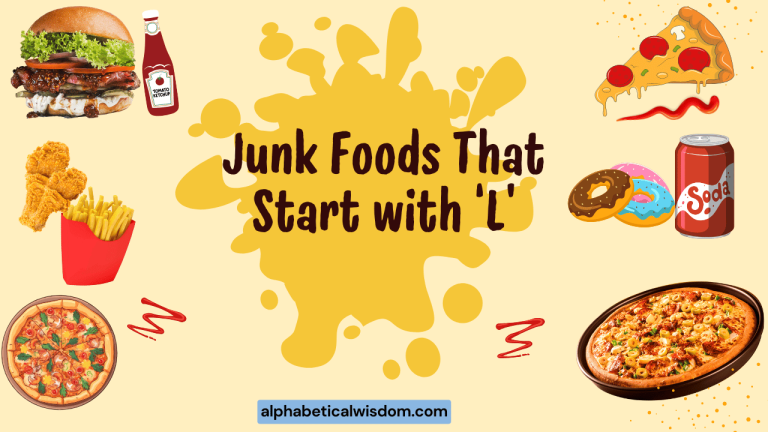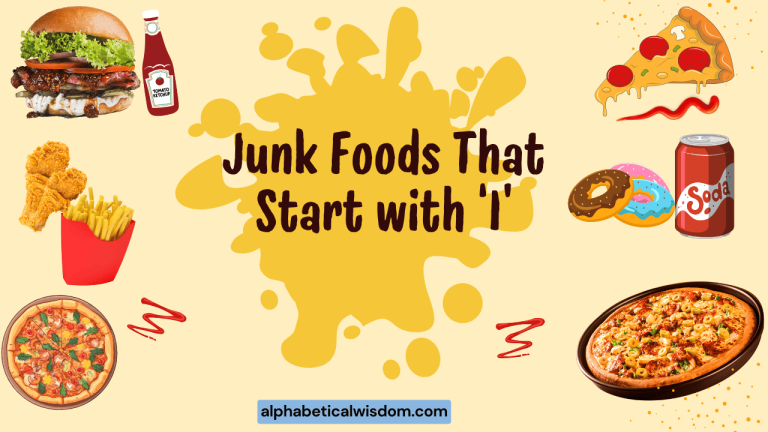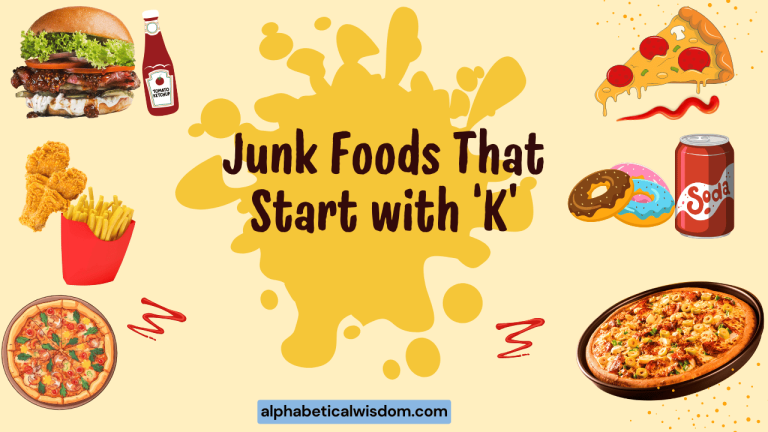Nouns: “H” Junk Foods – A Grammatical Guide
Understanding nouns is crucial for building strong English grammar skills. This article focuses on a specific category of nouns: junk foods that start with the letter “H.” By exploring these nouns, we’ll delve into various aspects of noun classification, usage, and common grammatical errors.
This guide is perfect for English language learners of all levels, from beginners to advanced speakers, who want to improve their vocabulary and grammatical accuracy while having a bit of fun with the topic of food!
Table of Contents
- Introduction
- Definition of Nouns
- Structural Breakdown of Nouns
- Types of Nouns
- Junk Food Nouns Starting with “H”
- Examples of “H” Junk Food Nouns in Sentences
- Usage Rules for Nouns
- Common Mistakes with Nouns
- Practice Exercises
- Advanced Topics: Noun Clauses and Phrases
- FAQ
- Conclusion
Definition of Nouns
A noun is a word that represents a person, place, thing, or idea. Nouns are the fundamental building blocks of sentences, serving as the subjects, objects, or complements of verbs. They provide the essential information about what or who is being discussed. Understanding the different types and functions of nouns is crucial for constructing grammatically correct and meaningful sentences.
Nouns can be classified in several ways, including by their concreteness (concrete vs. abstract), number (singular vs. plural), and whether they are common or proper. Each classification affects how the noun is used in a sentence and what grammatical rules apply to it.
For example, proper nouns require capitalization, while plural nouns often require verb agreement.
Classification of Nouns
Nouns can be classified based on several criteria:
- Common Nouns: General names for people, places, things, or ideas (e.g., hamburger, city, happiness).
- Proper Nouns: Specific names for people, places, things, or ideas (e.g., Hershey’s, Paris, Tuesday).
- Concrete Nouns: Nouns that can be perceived through the senses (e.g., hotdog, table, aroma).
- Abstract Nouns: Nouns that represent ideas, concepts, or qualities (e.g., hunger, joy, freedom).
- Countable Nouns: Nouns that can be counted and have a plural form (e.g., cookie, cookies).
- Uncountable Nouns: Nouns that cannot be counted and generally do not have a plural form (e.g., honey, sugar).
- Collective Nouns: Nouns that refer to a group of things or people (e.g., group, team, family).
Function of Nouns
Nouns perform several functions within a sentence:
- Subject: The noun that performs the action of the verb (e.g., The **hamburger** is delicious).
- Object: The noun that receives the action of the verb (e.g., I ate the **hotdog**).
- Complement: The noun that renames or describes the subject (e.g., He is a **chef**).
- Object of a Preposition: The noun that follows a preposition (e.g., I put the candy on the **table**).
Structural Breakdown of Nouns
The structure of a noun can be quite simple or complex, depending on the type of noun and its context. Understanding the structural elements of nouns helps in identifying and using them correctly.
A basic noun structure consists of the noun itself, which can be modified by adjectives, articles, and other determiners. Complex noun structures can include noun phrases, which are groups of words that function as a single noun.
Simple Noun Structure
A simple noun structure typically involves a single noun, which can be a common noun or a proper noun. It can be preceded by articles (a, an, the) or other determiners (e.g., this, that, my, her).
Examples:
- Hamburger
- A hotdog
- The honey
- My hard candy
Complex Noun Structure
A complex noun structure involves a noun phrase, which includes the noun along with its modifiers. These modifiers can be adjectives, adverbs, prepositional phrases, or other nouns.
Examples:
- A delicious hamburger (adjective + noun)
- The hot honey from the store (adjective + noun + prepositional phrase)
- That sugary hard candy (adjective + adjective + noun)
- The very sweet honey (adverb + adjective + noun)
Types of Nouns
As mentioned earlier, nouns can be categorized into several types based on their characteristics. Understanding these types is essential for using nouns correctly in sentences.
Common vs. Proper Nouns
Common nouns are general names for people, places, things, or ideas. They are not capitalized unless they begin a sentence.
Examples: hamburger, hotdog, honey.
Proper nouns are specific names for people, places, things, or ideas. They are always capitalized.
Examples: Hershey’s, Hostess, Hawaiian Punch.
Concrete vs. Abstract Nouns
Concrete nouns are things that can be perceived through the senses. You can see, hear, touch, taste, or smell them.
Examples: hamburger, hotdog, hard candy.
Abstract nouns are things that cannot be perceived through the senses. They represent ideas, concepts, or qualities.
Examples: hunger, happiness, hope.
Countable vs. Uncountable Nouns
Countable nouns can be counted and have a plural form.
Examples: hamburger, hotdog, hard candy.
Uncountable nouns cannot be counted and generally do not have a plural form. They often refer to substances, liquids, or abstract concepts.
Examples: honey, sugar.
Collective Nouns
Collective nouns refer to a group of things or people considered as a single unit.
Examples: A horde of hungry customers, a heap of hard candies.
Junk Food Nouns Starting with “H”
This section focuses specifically on junk food nouns that start with the letter “H.” These nouns will be used to illustrate the various grammatical concepts discussed throughout the article.
- Hamburger: A sandwich consisting of a cooked patty of ground beef served in a bun.
- Hotdog: A cooked sausage, typically made of beef or pork, served in a long roll.
- Hash Browns: A dish of finely chopped potatoes that have been fried.
- Honey Bun: A sweet roll made with honey and cinnamon.
- Hard Candy: A type of candy that is hard and brittle.
- Hershey’s Kiss: A small, conical piece of chocolate manufactured by The Hershey Company.
- Hostess Cupcake: A chocolate cupcake with a creamy filling, made by Hostess Brands.
- Hawaiian Punch: A brand of fruit punch flavored drink.
- Hummingbird Cake: A spice cake with mashed bananas, pineapple, and pecans, frosted with cream cheese frosting.
Examples of “H” Junk Food Nouns in Sentences
This section provides examples of how “H” junk food nouns are used in sentences, categorized by their function within the sentence.
Subject Examples
In these examples, the “H” junk food noun acts as the subject of the sentence, performing the action.
Here is a table with examples:
| Sentence | Noun | Type |
|---|---|---|
| Hamburger is my favorite junk food. | Hamburger | Common, Concrete, Countable |
| Hotdogs are often served at baseball games. | Hotdogs | Common, Concrete, Countable |
| Hash browns are a popular breakfast side dish. | Hash browns | Common, Concrete, Countable |
| Honey buns are a sweet treat to enjoy with coffee. | Honey buns | Common, Concrete, Countable |
| Hard candy can last a long time in your mouth. | Hard candy | Common, Concrete, Countable |
| Hershey’s Kisses are a classic chocolate candy. | Hershey’s Kisses | Proper, Concrete, Countable |
| Hostess Cupcakes are a nostalgic childhood favorite. | Hostess Cupcakes | Proper, Concrete, Countable |
| Hawaiian Punch is a sugary-sweet drink. | Hawaiian Punch | Proper, Concrete, Uncountable |
| Hummingbird cake a Southern dessert staple. | Hummingbird cake | Common, Concrete, Countable |
| The hamburger smelled delicious. | Hamburger | Common, Concrete, Countable |
| The hotdog was grilled to perfection. | Hotdog | Common, Concrete, Countable |
| The hash browns were crispy and golden. | Hash browns | Common, Concrete, Countable |
| The honey bun was warm and gooey. | Honey bun | Common, Concrete, Countable |
| The hard candy melted in my mouth. | Hard candy | Common, Concrete, Countable |
| The Hershey’s Kiss was a sweet surprise. | Hershey’s Kiss | Proper, Concrete, Countable |
| The Hostess Cupcake brought back memories. | Hostess Cupcake | Proper, Concrete, Countable |
| The Hawaiian Punch stained my shirt. | Hawaiian Punch | Proper, Concrete, Uncountable |
| The hummingbird cake was beautifully decorated. | Hummingbird cake | Common, Concrete, Countable |
| A hamburger is what I want for lunch. | Hamburger | Common, Concrete, Countable |
| A hotdog is a quick and easy meal. | Hotdog | Common, Concrete, Countable |
| Hash browns are best served hot. | Hash browns | Common, Concrete, Countable |
| A honey bun is too sweet for me. | Honey bun | Common, Concrete, Countable |
| Hard candy is not good for your teeth. | Hard candy | Common, Concrete, Countable |
| A Hershey’s Kiss is a small indulgence. | Hershey’s Kiss | Proper, Concrete, Countable |
| A Hostess Cupcake is a guilty pleasure. | Hostess Cupcake | Proper, Concrete, Countable |
| Hawaiian Punch is a bright red color. | Hawaiian Punch | Proper, Concrete, Uncountable |
| Hummingbird cake is often served at celebrations. | Hummingbird cake | Common, Concrete, Countable |
Object Examples
In these examples, the “H” junk food noun acts as the object of the verb, receiving the action.
Consider the examples in the table below:
| Sentence | Noun | Type |
|---|---|---|
| I ate a delicious hamburger. | Hamburger | Common, Concrete, Countable |
| He ordered two hotdogs at the stadium. | Hotdogs | Common, Concrete, Countable |
| She made hash browns for breakfast. | Hash browns | Common, Concrete, Countable |
| They bought a box of honey buns from the bakery. | Honey buns | Common, Concrete, Countable |
| He sucked on a piece of hard candy. | Hard candy | Common, Concrete, Countable |
| She shared her Hershey’s Kisses with her friends. | Hershey’s Kisses | Proper, Concrete, Countable |
| He unwrapped a Hostess Cupcake and took a bite. | Hostess Cupcake | Proper, Concrete, Countable |
| They drank Hawaiian Punch at the party. | Hawaiian Punch | Proper, Concrete, Uncountable |
| She baked a hummingbird cake for the potluck. | Hummingbird cake | Common, Concrete, Countable |
| I love to eat a hamburger with fries. | Hamburger | Common, Concrete, Countable |
| He enjoys a hotdog with mustard and relish. | Hotdog | Common, Concrete, Countable |
| She always orders hash browns when we go out for breakfast. | Hash browns | Common, Concrete, Countable |
| They crave a honey bun in the morning. | Honey bun | Common, Concrete, Countable |
| He keeps a stash of hard candy in his desk. | Hard candy | Common, Concrete, Countable |
| She always offers me Hershey’s Kisses when I visit. | Hershey’s Kisses | Proper, Concrete, Countable |
| He often grabs a Hostess Cupcake for a snack. | Hostess Cupcake | Proper, Concrete, Countable |
| She pours herself a glass of Hawaiian Punch. | Hawaiian Punch | Proper, Concrete, Uncountable |
| He made a hummingbird cake from scratch. | Hummingbird cake | Common, Concrete, Countable |
| I saw a giant hamburger at the food festival. | Hamburger | Common, Concrete, Countable |
| He found a cheap hotdog at the corner store. | Hotdog | Common, Concrete, Countable |
| She tasted the best hash browns at the diner. | Hash browns | Common, Concrete, Countable |
| They smelled a sweet honey bun baking in the oven. | Honey bun | Common, Concrete, Countable |
| He found a piece of hard candy in his pocket. | Hard candy | Common, Concrete, Countable |
| She received a bag of Hershey’s Kisses as a gift. | Hershey’s Kisses | Proper, Concrete, Countable |
| He shared his Hostess Cupcake with his friend. | Hostess Cupcake | Proper, Concrete, Countable |
| She spilled Hawaiian Punch on the table. | Hawaiian Punch | Proper, Concrete, Uncountable |
| He cut a slice of hummingbird cake for himself. | Hummingbird cake | Common, Concrete, Countable |
Object of Preposition Examples
In these examples, the “H” junk food noun is the object of a preposition.
See the table below for a list of examples:
| Sentence | Noun | Type |
|---|---|---|
| I put mustard on my hamburger. | Hamburger | Common, Concrete, Countable |
| He added relish to his hotdog. | Hotdog | Common, Concrete, Countable |
| She sprinkled salt on the hash browns. | Hash browns | Common, Concrete, Countable |
| They drizzled glaze over the honey buns. | Honey buns | Common, Concrete, Countable |
| He kept the hard candy in his pocket. | Hard candy | Common, Concrete, Countable |
| She shared a bag of Hershey’s Kisses with her classmates. | Hershey’s Kisses | Proper, Concrete, Countable |
| He took a bite out of the Hostess Cupcake. | Hostess Cupcake | Proper, Concrete, Countable |
| They poured a glass of Hawaiian Punch for the kids. | Hawaiian Punch | Proper, Concrete, Uncountable |
| She placed a candle on top of the hummingbird cake. | Hummingbird cake | Common, Concrete, Countable |
| I went to the store for a hamburger. | Hamburger | Common, Concrete, Countable |
| He asked for a hotdog without onions. | Hotdog | Common, Concrete, Countable |
| She cooked the hash browns in butter. | Hash browns | Common, Concrete, Countable |
| They ate the honey buns with coffee. | Honey buns | Common, Concrete, Countable |
| He choked on a piece of hard candy. | Hard candy | Common, Concrete, Countable |
| She gave some Hershey’s Kisses to her daughter. | Hershey’s Kisses | Proper, Concrete, Countable |
| He saved the last Hostess Cupcake for later. | Hostess Cupcake | Proper, Concrete, Countable |
| She mixed the juice with Hawaiian Punch. | Hawaiian Punch | Proper, Concrete, Uncountable |
| He put frosting on the hummingbird cake. | Hummingbird cake | Common, Concrete, Countable |
| I dream about eating a juicy hamburger. | Hamburger | Common, Concrete, Countable |
| He imagines eating a grilled hotdog at the beach. | Hotdog | Common, Concrete, Countable |
| She thinks about having crispy hash browns for breakfast. | Hash browns | Common, Concrete, Countable |
| They talk about sharing a sweet honey bun. | Honey bun | Common, Concrete, Countable |
| He worries about the sugar in the hard candy. | Hard candy | Common, Concrete, Countable |
| She reminisces about getting Hershey’s Kisses as a child. | Hershey’s Kisses | Proper, Concrete, Countable |
| He jokes about eating a Hostess Cupcake for dinner. | Hostess Cupcake | Proper, Concrete, Countable |
| She laughs about spilling Hawaiian Punch on her dress. | Hawaiian Punch | Proper, Concrete, Uncountable |
| He brags about baking the best hummingbird cake in town. | Hummingbird cake | Common, Concrete, Countable |
Usage Rules for Nouns
Proper noun usage is essential for clear and correct writing. Here are some key rules to remember:
- Capitalization: Always capitalize proper nouns, including names of people, places, organizations, and specific things.
- Article Usage: Use articles (a, an, the) correctly with common nouns. Use “a” or “an” with singular, countable nouns when referring to them in general. Use “the” when referring to a specific noun or one that has been previously mentioned.
- Pluralization: Form the plural of countable nouns correctly. Most nouns add “-s,” but some have irregular plural forms (e.g., child/children).
- Subject-Verb Agreement: Ensure that the verb agrees in number with the noun subject. Singular nouns take singular verbs, and plural nouns take plural verbs.
For example:
- Correct: The hamburger is delicious.
- Incorrect: The hamburger are delicious.
Common Mistakes with Nouns
Learners often make mistakes with nouns, particularly in capitalization, article usage, and subject-verb agreement. Here are some common errors and how to avoid them:
| Incorrect | Correct | Explanation |
|---|---|---|
| I ate a hamburger at mcdonalds. | I ate a hamburger at McDonald’s. | Proper nouns (McDonald’s) should be capitalized. |
| The honey are sweet. | The honey is sweet. | Uncountable nouns take singular verbs. |
| I want a honeys. | I want some honey. | “Honey” is an uncountable noun and doesn’t usually have a plural form. |
| I like hostess cupcake. | I like Hostess Cupcakes. | Missing plural and article for countable nouns. |
| The hamburger are good. | The hamburger is good. | Singular noun requires singular verb. |
| I want a Hawaiian Punchs. | I want some Hawaiian Punch. | Uncountable noun, so no plural form. |
| She eats hard candys. | She eats hard candy. | Incorrect pluralization of ‘hard candy’ in this context. |
| I love eat hamburger. | I love to eat hamburgers. | Missing ‘to’, and needs plural form. |
| The hostess cupcake are delicious. | The Hostess Cupcake is delicious. | Singular noun requires singular verb. |
| I bought a honey buns. | I bought some honey buns. | Using a plural form, so the use of ‘a’ is incorrect. |
Practice Exercises
Test your knowledge with these practice exercises. Identify the nouns in each sentence and classify them by type.
Exercise 1: Identifying Nouns
Identify all the nouns in the following sentences and classify them as common or proper.
| Question | Answer |
|---|---|
| 1. The hamburger from the restaurant was delicious. | Hamburger (common), restaurant (common) |
| 2. Hershey’s Kisses are my favorite type of chocolate. | Hershey’s Kisses (proper), chocolate (common) |
| 3. I bought a honey bun at the bakery. | Honey bun (common), bakery (common) |
| 4. Hawaiian Punch is a popular drink at parties. | Hawaiian Punch (proper), drink (common), parties (common) |
| 5. He ate a hotdog with mustard and relish. | Hotdog (common), mustard (common), relish (common) |
| 6. She made hash browns for the family. | Hash browns (common), family (common) |
| 7. The Hostess Cupcake brought back childhood memories. | Hostess Cupcake (proper), memories (common) |
| 8. The hummingbird cake was the best dessert at the party. | Hummingbird cake (common), dessert (common), party (common) |
| 9. I added honey to my tea. | Honey (common), tea (common) |
| 10. Hard candy is not good for your teeth. | Hard candy (common), teeth (common) |
Exercise 2: Countable vs. Uncountable Nouns
Identify the countable and uncountable nouns in the following sentences.
| Question | Answer |
|---|---|
| 1. I want a hamburger and some fries. | Hamburger (countable), fries (countable) |
| 2. Please add some honey to my tea. | Honey (uncountable), tea (uncountable) |
| 3. She ate two Hostess Cupcakes. | Hostess Cupcakes (countable) |
| 4. They drank Hawaiian Punch. | Hawaiian Punch (uncountable) |
| 5. He bought a bag of hard candy. | Hard candy (uncountable), bag (countable) |
| 6. We need more sugar in the cake. | Sugar (uncountable), cake (countable) |
| 7. I had a hotdog for lunch. | Hotdog (countable), lunch (uncountable) |
| 8. She used butter to cook the hash browns. | Butter (uncountable), hash browns (countable) |
| 9. Add extra cinnamon to the honey buns. | Cinnamon (uncountable), honey buns (countable) |
| 10. He shared some Hershey’s Kisses with me. | Hershey’s Kisses (countable) |
Exercise 3: Correcting Noun Errors
Correct the errors in the following sentences related to noun usage.
| Question | Answer |
|---|---|
| 1. I ate the hamburger at mcdonalds. | I ate the hamburger at McDonald’s. |
| 2. The honey are sweet. | The honey is sweet. |
| 3. I want a honeys. | I want some honey. |
| 4. I like hostess cupcake. | I like Hostess Cupcakes. |
| 5. She eats hard candys. | She eats hard candy. |
| 6. He eats a lot of sugar. | Correct as is. |
| 7. I saw a hostes cupcake yesterday. | I saw a Hostess Cupcake yesterday. |
| 8. A hawaiian punch is my favourite drink. | Hawaiian Punch is my favorite drink. |
| 9. I want a hotdog without a onions. | I want a hotdog without onions. |
| 10. The hashbrowns was delicious. | The hashbrowns were delicious. |
Advanced Topics: Noun Clauses and Phrases
For advanced learners, it’s important to understand noun clauses and noun phrases. These are complex structures that function as nouns within a sentence.
Noun Clauses
A noun clause is a group of words that contains a subject and a verb and functions as a noun. Noun clauses can act as subjects, objects, complements, or objects of prepositions.
Examples:
- What I want is a hamburger. (Subject)
- I know that he likes honey buns. (Object)
- The problem is that she ate all the hard candy. (Complement)
- I am worried about what he will order. (Object of preposition)
Noun Phrases
A noun phrase is a group of words that functions as a noun. It typically includes a noun and its modifiers (e.g., articles, adjectives, prepositional phrases).
Examples:
- A delicious hamburger is what I crave.
- He ordered a large plate of hash browns.
- The box of Hershey’s Kisses was a gift.
FAQ
- What is the difference between a common noun and a proper noun?
A common noun is a general name for a person, place, thing, or idea,
while a proper noun is a specific name and is always capitalized.
- How do I know if a noun is countable or uncountable?
Countable nouns can be counted and have a plural form, while uncountable nouns cannot be counted and generally do not have a plural form.
- What is subject-verb agreement?
Subject-verb agreement means that the verb in a sentence must agree in number with its subject. Singular subjects take singular verbs, and plural subjects take plural verbs.
- Can a noun be both concrete and countable?
Yes, many nouns can be both concrete and countable. For example, “hamburger” is a concrete noun because you can see and touch it, and it is countable because you can have one hamburger, two hamburgers, etc.
- How do I identify a noun in a sentence?
Nouns typically answer the questions “who?” or “what?” in a sentence. They can be the subject, object, or complement of a verb.
- What are some common mistakes to avoid when using nouns?
Common mistakes include incorrect capitalization of proper nouns, incorrect pluralization of nouns, and errors in subject-verb agreement.
- Where can I find more resources to learn about nouns?
You can find more resources in grammar textbooks, online grammar guides, and educational websites.
- Is it okay to use junk food nouns in formal writing?
While it’s generally acceptable, consider your audience and the tone of your writing. In very formal contexts, it may be better to use more neutral or academic vocabulary.
- How can I improve my noun usage in writing?
Practice identifying and using nouns in sentences, review grammar rules, and get feedback on your writing from teachers or peers.
- Are there any exceptions to the rules of noun usage?
Yes, there are always exceptions in English grammar. Some collective nouns can take either singular or plural verbs depending on the context. Some nouns have irregular plural forms that must be memorized.
Conclusion
Understanding nouns is fundamental to mastering English grammar. By focusing on junk food nouns that start with the letter “H,” this guide has provided a fun and engaging way to explore various aspects of noun classification, usage, and common errors.
Whether you are a beginner or an advanced learner, the knowledge and exercises in this article will help you improve your vocabulary and grammatical accuracy. Keep practicing, and you’ll soon become a noun expert!






